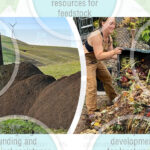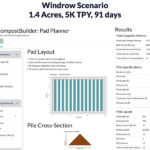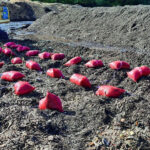 Sally Brown
Sally Brown
A year ago at the US Composting Council’s (USCC) annual conference in Charleston, South Carolina, the opening keynote speaker was Katharine Wilkinson, one of the authors of Drawdown, a book published in 2017 that ranked 80 different ways to actually remove carbon dioxide (CO2) from the atmosphere, drawing down its concentration. Composting came in at #60, primarily due to methane avoidance by not landfilling food scraps and composting them instead. Two days later, I was the closing keynote speaker. Composting’s #60 ranking inspired my closing talk about how much of an impact compost can have on climate change.
That keynote was the most fun I had in 2020. It also inspired this Drawdown article series, where I’ve detailed composting and compost use and their overall benefits to mitigating climate change — reducing methane from landfills and improving every aspect of soils that it comes into contact with. The limiting factor with compost is the small quantity that we can produce and the range of places that would benefit from just a little piece of the pile.
This year the USCC annual conference is virtual. The line-up includes Paul Hawken, editor of Drawdown. Hopefully, one year later, the Drawdown project has an expanded view of the value of the composting/compost use resource. I won’t be speaking this time around, but I’ll keep on writing. A fitting way to bookmark this Drawdown series is to evaluate whether our understanding of and appreciation for recycled organics has made any progress. One obvious way to do that is to look at the carbon trading markets and whether compost is a player. Another is to look at policies leading away from landfills and to compost piles.
Overview
The impact of compost on carbon emissions can be recognized in a number of ways. On a broad scale, these include regulatory changes, protocols on carbon markets, and activity by companies or organizations. Here’s an overview:
- Regulatory—Disposal Restrictions: When a state, city, county, or country enacts a landfill diversion ban to force organics out of the landfill and to an anaerobic digester or a composting pile, that is a legal mechanism to reduce emissions. When those types of bans are put into place, participation in voluntary carbon markets ceases to be an option. You are not diverting material because you are a good and just organization. You are doing it to avoid a fine. In the current carbon market, it is frowned upon to double dip — to divert because it is legally mandated and also to get carbon credits on a voluntary market. To date most of these types of bans have been focused on methane avoidance rather than the benefits associated with compost use. States with bans or mandates to divert food scraps out of the landfill (and typically yard trimmings) are California, Connecticut, Massachusetts, New Jersey, New York, Rhode Island and Vermont.
- Regulatory—Compost Use, Procurement: A next step with a regulatory approach would be requirements to actually use the finished materials. In some limited cases there are examples of requirements for compost use. One example is utilization on post construction soils, e.g., requiring use of compost on newly established landscapes at private homes or public/private construction. A second is procurement, typically contract language to require and facilitate use of composts. An example is state Departments of Transportation that require compost use for certain types of roadway projects. Another is California’s new requirement under SB1383 whereby jurisdictions are required to procure compost, mulch, biogas, etc. produced by diversion of its organics from disposal.
Right now the carbon markets assume that when you take those food scraps out of the landfill and to the composting pile, they will end up on soil somewhere. There is no second step — the step that makes sure that compost is used and used well. This becomes more problematic when you consider agricultural use as a best second step. One of the disconnects is that the agencies in charge of the compost feedstocks are typically isolated from the divisions/agencies where compost use would be beneficial and could be mandated.
Enacting requirements for compost use to go along with landfill bans becomes complicated. Think of it as trying to design a dating app that includes bureaucratic roadblocks and legal language as part of the profile. In order to make a match, my contract language would have to be compatible with your contract language. It is further complicated by the fact that the bans typically impact urban areas most. While there is growing recognition of the benefits of compost use for agricultural soils, the infrastructure and regulations around farm soils are located in a different universe from the ones controlling green bins in urban areas (the two universes are illustrated in the feature photos).
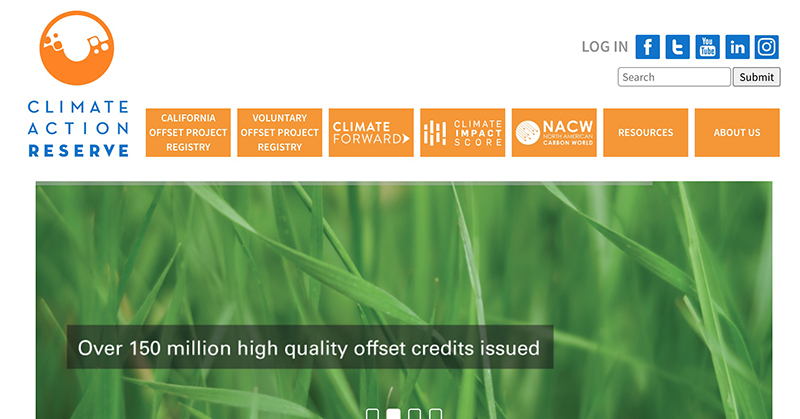 Carbon Markets: These are voluntary and driven by the demand for and price of carbon credits. The three big markets in the U.S. are the Climate Action Reserve (CAR), American Carbon Registry (ACR), and Verra. Verra appears to be more internationally focused although its headquarters are in Washington D.C.
Carbon Markets: These are voluntary and driven by the demand for and price of carbon credits. The three big markets in the U.S. are the Climate Action Reserve (CAR), American Carbon Registry (ACR), and Verra. Verra appears to be more internationally focused although its headquarters are in Washington D.C.
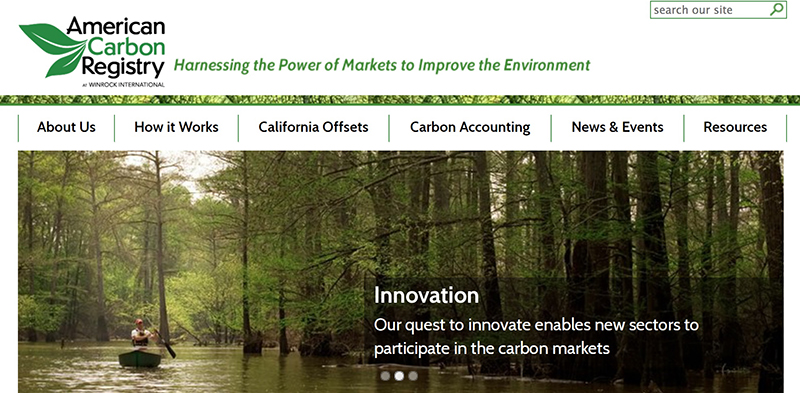 CAR has a protocol for food scrap diversion to compost that went into effect in 2013. It also has a new protocol in process for Soil Enrichment that includes compost and other organics. The few composters that have registered on a carbon exchange have done so using CAR and its landfill diversion protocol when organics are not mandated to be diverted. ACR has a protocol for compost addition to grasslands. Verra has a sort of related protocol that addresses waste diversion and energy efficiency. It has protocols for soil carbon, primarily focused on the use of biochar.
CAR has a protocol for food scrap diversion to compost that went into effect in 2013. It also has a new protocol in process for Soil Enrichment that includes compost and other organics. The few composters that have registered on a carbon exchange have done so using CAR and its landfill diversion protocol when organics are not mandated to be diverted. ACR has a protocol for compost addition to grasslands. Verra has a sort of related protocol that addresses waste diversion and energy efficiency. It has protocols for soil carbon, primarily focused on the use of biochar.
Getting The Credits
There was a great deal of excitement, at least in my house, when CAR adopted the compost protocol. I really thought that it would mean big changes. It hasn’t. About 5 composters are currently registered. Far from a tsunami. At least one of those is based in my backyard, the Pacific Northwest. We haven’t banned organics where I live. Several of the municipalities and counties have very strongly encouraged diversion. Green carts are provided with lots of information available to show you how to divert properly. Stopping short of a ban has allowed composters to get carbon credits.
However, getting these credits is not a simple process: think lots of verification steps and third-party auditors. The credits also won’t make you rich. In other words, it is a cumbersome process without terrific rewards, more like an additional set of regulations than a pot of gold. Until that changes, I wouldn’t expect composters to go flocking for these credits.
What has increased are small-scale neighborhood/community programs. These are not done because of rules or for credits on an exchange. These are being done because it is the right thing to do and people are losing patience. Small-scale programs have been written about in BioCycle innumerable times and include programs like the Rust Belt Riders, the New York City Compost Program, LA Compost, Rising Sand Organics, and many more. I am a convert to the value of these programs. They may not move significant tonnage but they move people in significant ways. These programs may be setting the stage for larger scale efforts when the time is right.
Next Steps
This state of compost and carbon credits review has pretty much shown that not much has changed over the past 10-plus years. (Articles in BioCycle on the topic date back to the mid-2000s.) You may feel, at least from a carbon standpoint, that we have been promised a lot and not seen very much. Many more states and communities are working towards food scrap bans but we are far from living in compost nirvana. This world may soon be disrupted. Changes are on the horizon both on a federal policy level as well as on a ‘how we do business’ level. It may take some time for these to filter to the green bin but hear me out. Let’s start by looking at the different levels where change is afoot.
- Federal Level: There is some indication that on a federal level, climate change is about to get real again. Understanding the impact that agriculture can have in mitigating climate change is supposedly part of the upcoming program. In memos released by President-elect Biden’s transition team, soil carbon is a real part of the answer. We all know how compost plays into that. I’ve read that a top advisor to Biden is proposing a carbon bank at the U.S. Department of Agriculture that will provide carbon credit options for farmers. There is the existing Conservation Reserve Program (CRP) to protect sensitive lands, so this would not be all that different.
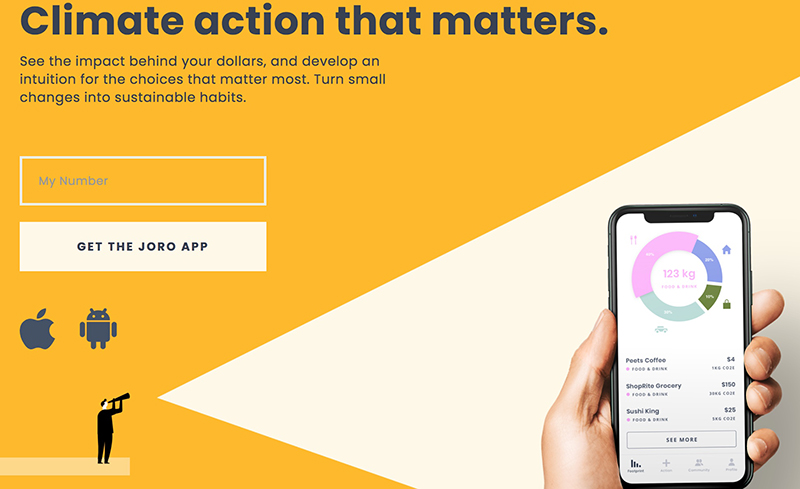 Tech Transfer: Technology has changed all of our worlds in every aspect. It may soon impact how we compost and look at carbon. To date, technological innovations in composting are still at about the stage of having the tip scale read out in digital format. The same way that your phone is no longer connected to a wall and can also serve as your TV, fitness coach, photo album, and navigation assistant, technology and artificial intelligence (AI) are increasingly being used to bring integrity and accessibility to carbon projects. This is thrilling and can be a game changer.
Tech Transfer: Technology has changed all of our worlds in every aspect. It may soon impact how we compost and look at carbon. To date, technological innovations in composting are still at about the stage of having the tip scale read out in digital format. The same way that your phone is no longer connected to a wall and can also serve as your TV, fitness coach, photo album, and navigation assistant, technology and artificial intelligence (AI) are increasingly being used to bring integrity and accessibility to carbon projects. This is thrilling and can be a game changer.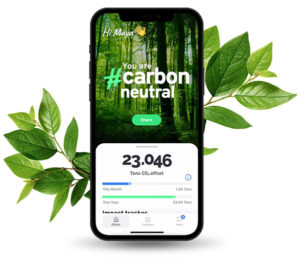 Individual Options: New apps (for that same phone that doubles as your personal assistant) are being developed that will allow people to track the carbon impact of their activities. One of these apps is called Joro and was developed by a Princeton University undergraduate who became concerned about climate after watching Food Inc., a documentary on the U.S. food industry. The app tracks your carbon footprint and offers options to reduce it and to connect with others on the same path in your community. Think of it as a personal Fitbit for carbon. Also realize that if Food Inc. was her inspiration, there will likely be options to consider food related actions in the app. Another example of a carbon app for your phone is Klima.
Individual Options: New apps (for that same phone that doubles as your personal assistant) are being developed that will allow people to track the carbon impact of their activities. One of these apps is called Joro and was developed by a Princeton University undergraduate who became concerned about climate after watching Food Inc., a documentary on the U.S. food industry. The app tracks your carbon footprint and offers options to reduce it and to connect with others on the same path in your community. Think of it as a personal Fitbit for carbon. Also realize that if Food Inc. was her inspiration, there will likely be options to consider food related actions in the app. Another example of a carbon app for your phone is Klima.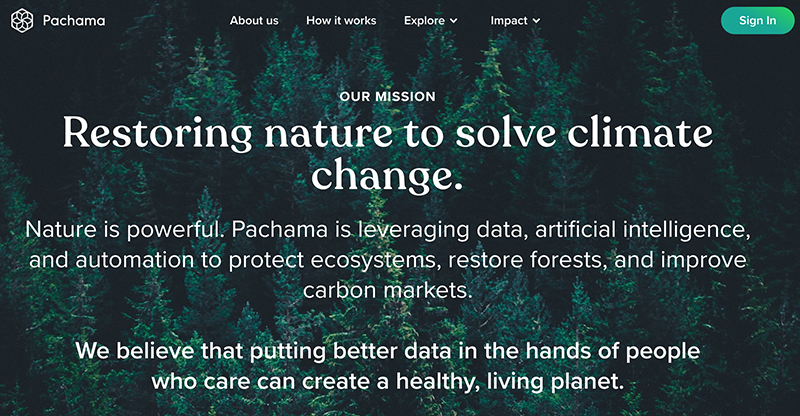 Corporate Options: The way that people and companies buy carbon credits is also changing with technology. Take Pachama, for example, which is focused on reforestation and is using data, AI and automation to document changes in forests as a result of restoration/protection/sequestration activities. Its work is focused on forestry but imagine getting more data and intelligence in the composting field. A quick look at its website shows projects already listed on the ACR that you can buy with one click. With verification of change via use of enhanced data inputs and AI, maybe this will turn into a more solid investment option.
Corporate Options: The way that people and companies buy carbon credits is also changing with technology. Take Pachama, for example, which is focused on reforestation and is using data, AI and automation to document changes in forests as a result of restoration/protection/sequestration activities. Its work is focused on forestry but imagine getting more data and intelligence in the composting field. A quick look at its website shows projects already listed on the ACR that you can buy with one click. With verification of change via use of enhanced data inputs and AI, maybe this will turn into a more solid investment option.
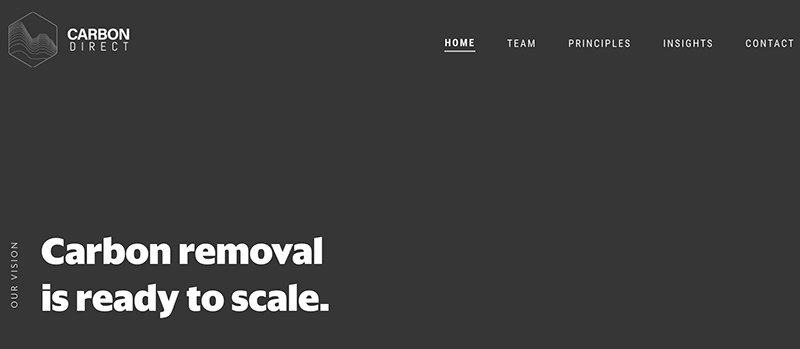 Some retailers aren’t bothering with registries and are just selling credits to customers with their own projects. An example is Carbon Direct. Look at its website and you realize that they are talking about serious capital. Another company has taken matters into its own hands. Stripe is a financial services and software company that you likely have never heard about. You have heard of Kickstarter. Stripe processes the payments for that app among other things. One estimate put the value of Stripe at over $35 billion. Enough with the registries and protocols, companies like Stripe have their own projects, making it easy for clients to contribute to projects to sequester carbon. With Stripe, you use its service to process a payment and a portion goes to a project of Stripe’s choice. Right now there are 4 projects and none include compost. Wouldn’t it be something if that changed.
Some retailers aren’t bothering with registries and are just selling credits to customers with their own projects. An example is Carbon Direct. Look at its website and you realize that they are talking about serious capital. Another company has taken matters into its own hands. Stripe is a financial services and software company that you likely have never heard about. You have heard of Kickstarter. Stripe processes the payments for that app among other things. One estimate put the value of Stripe at over $35 billion. Enough with the registries and protocols, companies like Stripe have their own projects, making it easy for clients to contribute to projects to sequester carbon. With Stripe, you use its service to process a payment and a portion goes to a project of Stripe’s choice. Right now there are 4 projects and none include compost. Wouldn’t it be something if that changed.
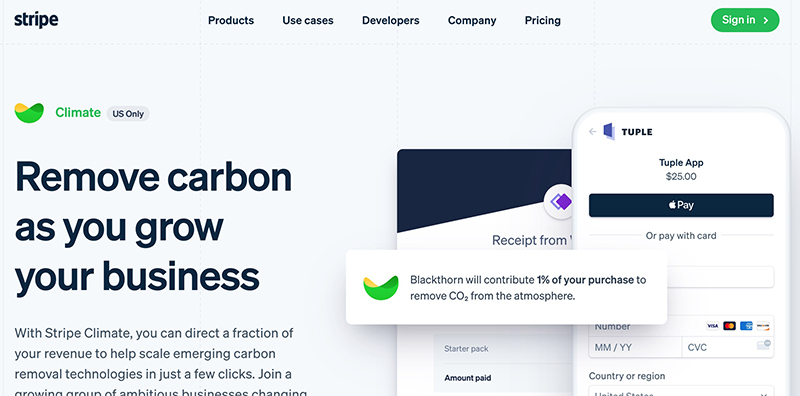 All of this to say that hope is on the horizon. Right now, hope seems to come in glimmers. I get that we all want more than glimmers. But realize that some of these glimmers promise potential for big changes and changes for the better. I am OK to stick with glimmers for a while. I do have my Raybans on hand though, for when those glimmers get too bright for my sensitive eyes to handle.
All of this to say that hope is on the horizon. Right now, hope seems to come in glimmers. I get that we all want more than glimmers. But realize that some of these glimmers promise potential for big changes and changes for the better. I am OK to stick with glimmers for a while. I do have my Raybans on hand though, for when those glimmers get too bright for my sensitive eyes to handle.
Sally Brown, BioCycle’s Senior Adviser, is a Research Professor at the University of Washington in the College of the Environment. Part X.2 features a Q&A with Scott Subler of ClimeCo, a company active in carbon markets.



